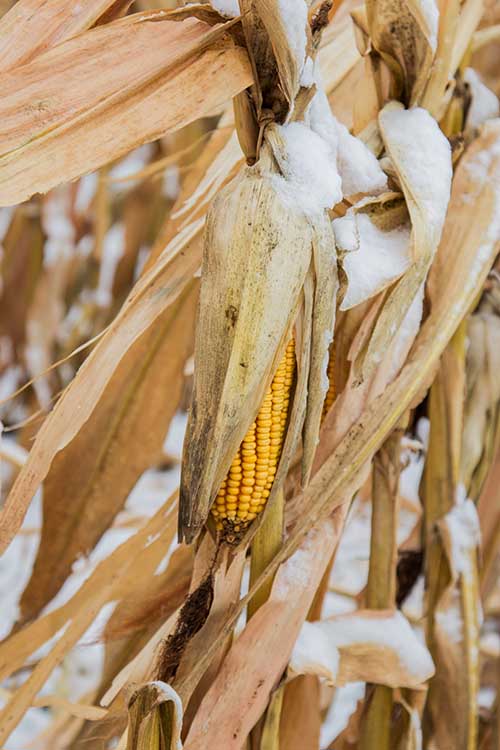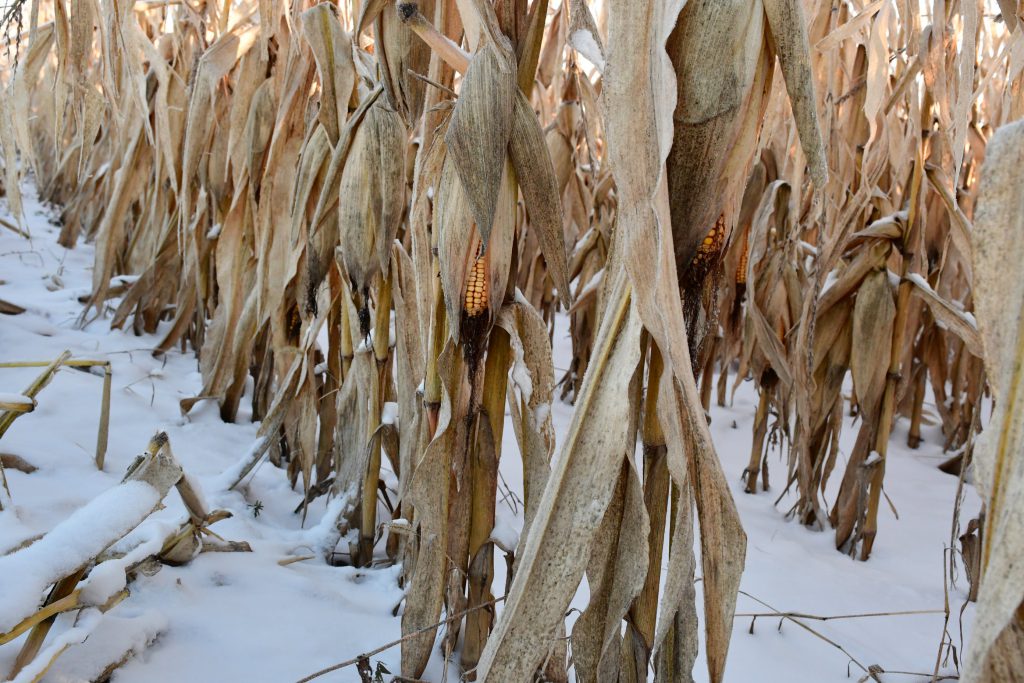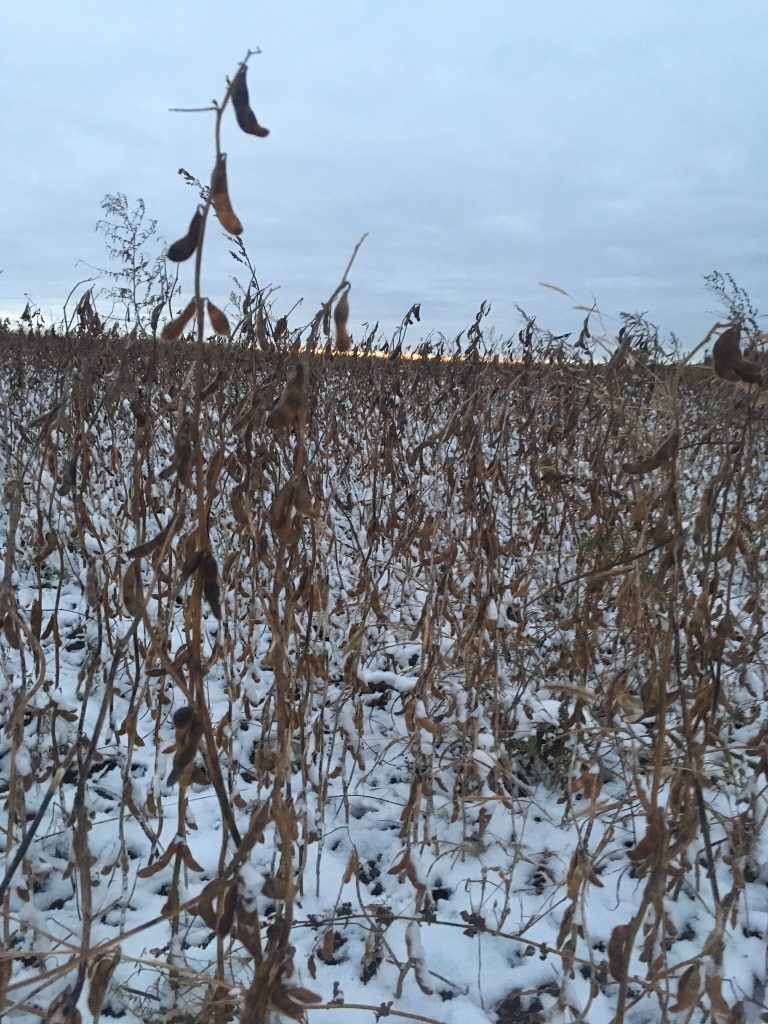What happens when grains are left in the field and it snows?

Fall is a busy time of year for Ontario farmers- they are working hard to harvest Ontario corn and soybeans. The ideal harvest day is sunny, crisp and the ground isn’t too wet to drive the combines over. But many years harvest weather can be tricky- it can rain for days on end, causing the field to be muddy and wet. Or we can get a preview of winter with snow falling before the grains are harvested.
What happens?
Late last month, many parts of Ontario got their first taste of winter with snow falling, and below zero temperatures. But in some of those areas of the province, harvest isn’t wrapped up. There are still some acres of soybeans and corn that need to be harvested.
Having snow fall on mature crops is not ideal, but it does depend on the crop the repercussions, and fallout.
For corn:
Corn generally stands about 7-8 feet tall. With this height, as the snow falls, most of it will fall on the lower leaves and the ground. The cobs themselves are about halfway up the plant and don’t generally get covered in that much snow. As corn is a taller crop, it has a more robust root system under the ground. These roots are valuable in absorbing water and nutrients but also can act as a stabilizer to help hold the plant up (much like trees). With the roots, and the thick stalks, corn can sometimes stay standing through heavy snows and winter weather. There have been falls, where many acres of corn were left out in the winter and harvested in the spring. There are a few benefits to this, but it is generally a last resort and farmers strive hard to harvest their crops in the fall.

But, if the corn falls over due to the weight of the snow, it is very difficult to harvest and use a combine to pick the corn cobs off the ground. Another repercussion of snow-covered corn is that the cobs themselves might end up with too much snow on them. Combines can harvest grains in the snow but not very well. The moving parts inside the combine can become filled up with snow or ice, and it can cause break downs or poor harvests.
Snow covered corn is not the end of the world; if the plants stay standing, farmers can try to harvest when the cobs aren’t covered in as much snow.
Soybeans however are a different story.
For soybeans:
Soybeans are much shorter plants- standing roughly 3 feet high, with many of the pods on the plant growing from the top of the plant right down the just above ground level. This is where the issue comes in.
Harvesting soybeans in less-than-ideal circumstances (muddy ground, standing water, snow covered ground etc.) is trickier as farmers try to get all the pods off the plant when they are combining. They try to put the head attachment on the combine underneath the very first pod which is just off the ground. When the field is wet or muddy, or snow covered they run the chance of putting that mud or snow into the combine. Much like corn, snow inside a combine can cause the moving parts to fill up, become blocked and not operate very well.

Soybeans are shorter and compared to corn have more delicate stalks and root systems. They would not withstand heavy snow or winter weather as easily as gran corn can. Soybeans run a higher chance of falling over, or their stems breaking when covered in snow.
The pods and seeds themselves likely wont face any damage due to the snowy weather, but the plants themselves may not fare as well in the snow.
So, what does this mean?
The biggest decision with snow covered grains, is how to finish the harvest. There is little damage to the actual seeds or kernels themselves because the snow falls when things are frozen including the seeds. Snow is not ideal for crops that are left to be harvested; the weather forecast for some areas are predicting warmer temperature which caused the snow to melt, to allow farmers to get their crops off before we see Mother Nature’s real winter.



